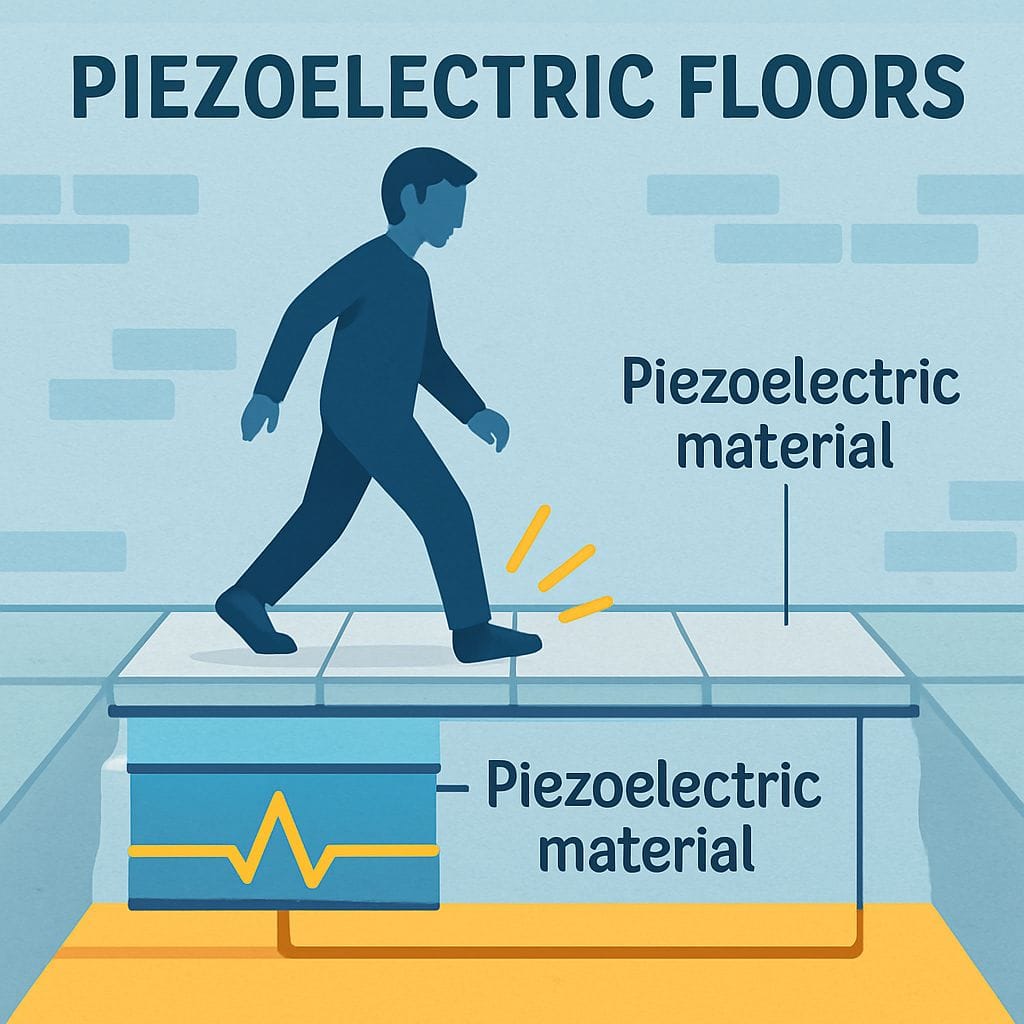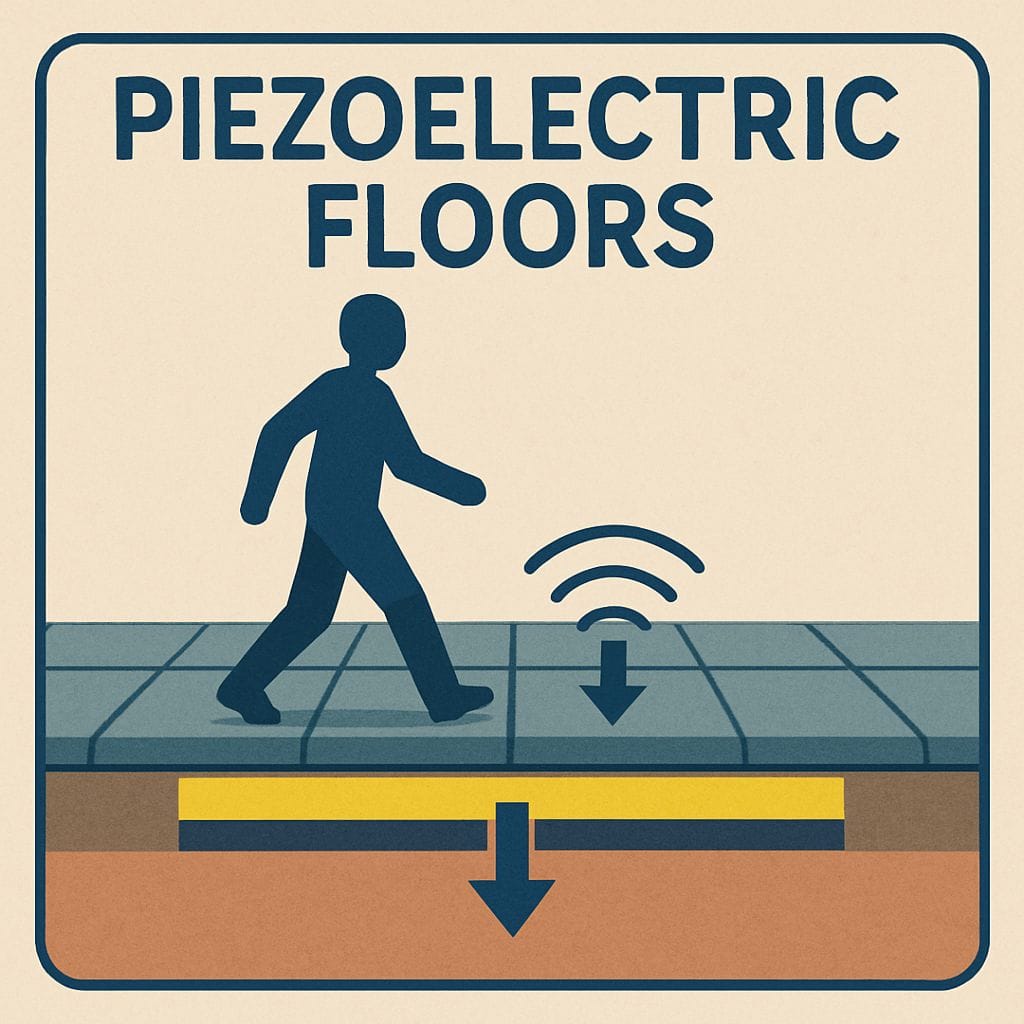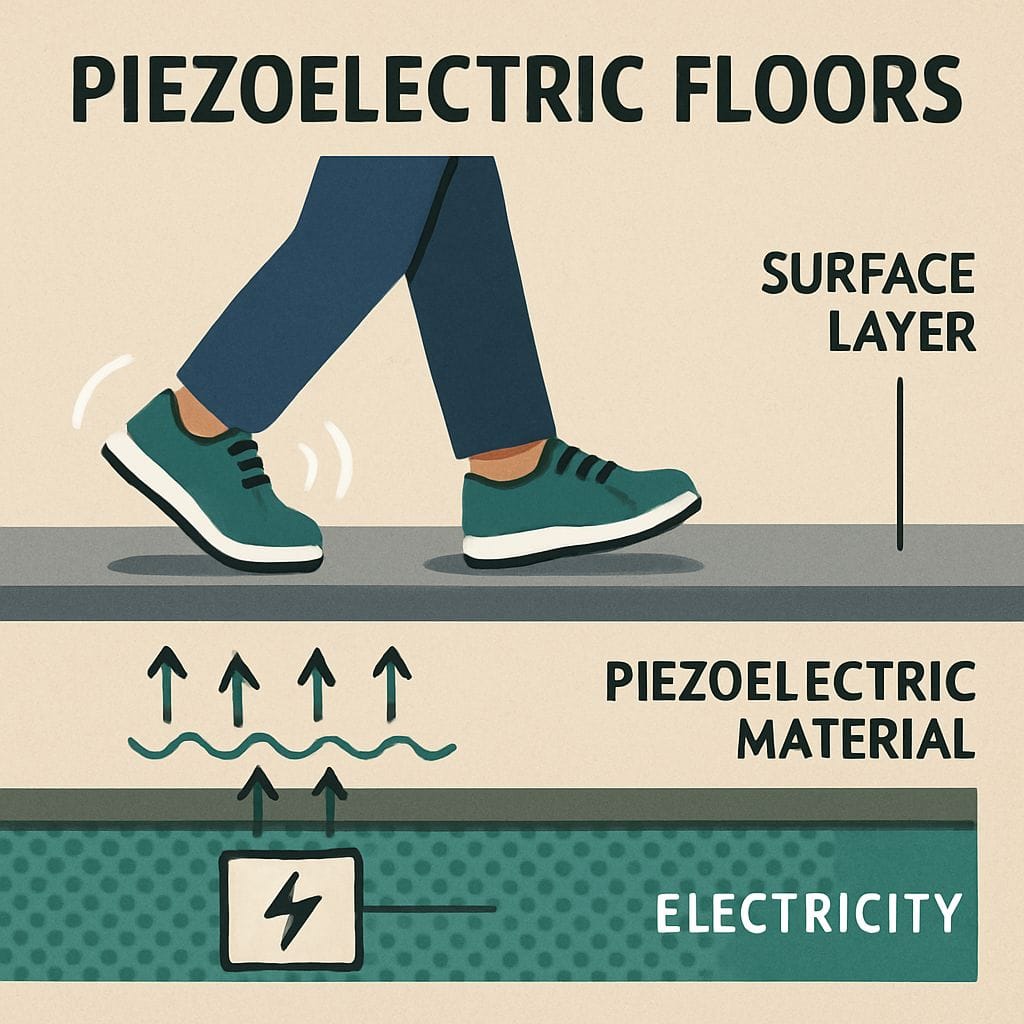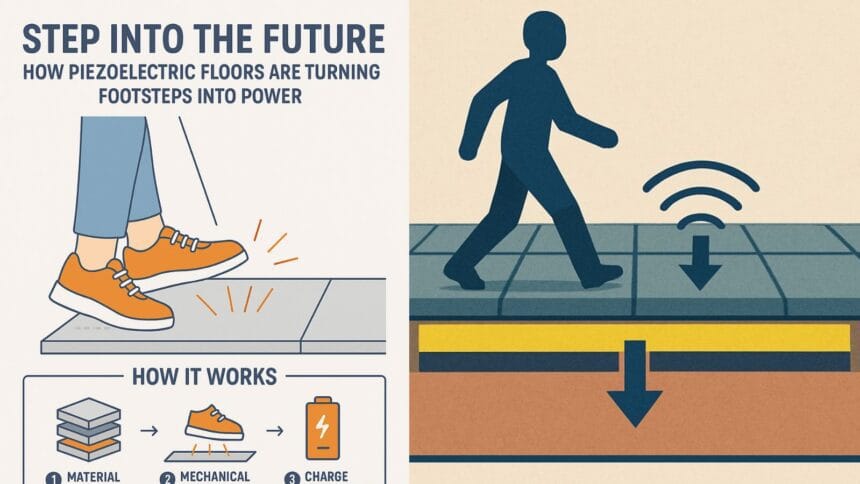Piezoelectric Floors: The Smart Solution to Power Cities One Step at a Time
Imagine if every step you took helped power a light, charge a phone, or even reduce the carbon footprint of a building. While this may sound futuristic, it is already becoming a reality thanks to piezoelectric floors — a cutting-edge innovation at the intersection of clean energy and smart design.
As urban centers continue to grow, there’s an urgent need to find new and sustainable ways to generate electricity. Traditional sources are often expensive, unsustainable, or harmful to the environment. But what if we could harness something as simple and abundant as foot traffic?
That’s exactly what piezoelectric floors aim to do. This article dives into how this technology works, its applications, benefits, and the promising future it holds for cities, buildings, and even homes.

What Are Piezoelectric Floors?
Piezoelectric floors are specialized flooring systems embedded with materials that can generate electrical energy when subjected to mechanical stress — in this case, the pressure from walking, running, or jumping.
This process is based on the piezoelectric effect, a phenomenon discovered in the 1880s where certain materials (like quartz or ceramic) produce an electric charge when compressed or bent.
When installed in high-footfall areas like shopping malls, stadiums, airports, or train stations, these floors can collect the mechanical energy from human movement and convert it into usable electricity.
How Do Piezoelectric Floors Work?
The science behind it is elegant yet powerful:
- Material Embedding
Piezoelectric sensors or tiles, usually made from materials like lead zirconate titanate or polyvinylidene fluoride, are embedded beneath the walking surface. - Mechanical Pressure
When a person steps on the floor, their weight creates mechanical stress on the piezoelectric elements. - Charge Generation
This stress causes the material to deform slightly, producing an electrical charge that is captured and stored or used immediately. - Energy Conversion and Storage
The generated electricity is either directed into batteries or directly powers nearby systems such as LED lighting, digital displays, or charging points.
Though the energy output per step is small — typically a few milliwatts — when combined with hundreds or thousands of people walking over the surface daily, the energy potential adds up quickly.
Real-Life Applications of Piezoelectric Floors
As technology advances and awareness grows, piezoelectric flooring is already being put to use in several real-world scenarios:
1. Smart Cities and Urban Spaces
In cities like London and Tokyo, piezoelectric floors have been installed in train stations and sidewalks to capture the energy of thousands of daily commuters.
2. Public Venues and Events
Stadiums and music festivals are ideal for harvesting footfall energy. Some events use piezoelectric dance floors to power lights and displays, allowing the crowd to literally fuel the show.
3. Schools and Campuses
Educational institutions are adopting this technology not only for energy savings but also to teach students about sustainable innovation.
4. Retail and Commercial Buildings
Shopping centers can use this technology to power advertisements, escalators, or even offer mobile charging spots powered by customer footsteps.
5. Smart Homes
In the future, piezoelectric floors might be used in home entryways or kitchens to power lights or sensors, especially in off-grid or energy-conscious designs.
Benefits of Piezoelectric Floors
Let’s explore the many advantages of this ground-breaking technology:
1. Clean Energy Generation
No fossil fuels, no noise, and no harmful emissions — piezoelectric energy is as green as it gets.
2. Space-Saving Technology
It doesn’t require large solar panels or wind turbines. The energy generation happens underfoot, using existing walking space.
3. Low Maintenance
Once installed, the system requires minimal upkeep and can last for years without performance loss.
4. Increased Public Awareness
Visible installations often feature indicators that show how much energy is being generated in real-time. This helps engage and educate the public on sustainable behavior.
5. Energy Independence
For off-grid areas or emergency shelters, piezoelectric floors could provide essential lighting or communication power without relying on external electricity.

Challenges and Limitations
While the technology is promising, piezoelectric floors are not without their challenges:
- High Installation Costs: Materials and setup are more expensive than conventional flooring.
- Low Energy Yield per Unit: A single step doesn’t produce much power, so the system is only viable in high-traffic areas.
- Durability Under Heavy Use: Continuous foot traffic and environmental wear can degrade sensors over time.
- Integration Complexity: Combining piezoelectric systems with existing power grids and building infrastructure can be technically demanding.
However, with research and mass adoption, costs are expected to decrease, and efficiencies will improve over time.
Innovations and Future Potential
The future of piezoelectric floors looks bright. Researchers are currently exploring ways to:
- Increase the energy output through improved materials and sensor designs.
- Develop hybrid systems that combine piezoelectric floors with solar or kinetic storage.
- Integrate wireless transmission so that generated energy can be fed into local smart grids.
- Create floors that can track movement patterns for data analytics, safety, and personalized experiences in smart homes.
Additionally, combining this technology with IoT (Internet of Things) could create self-powered sensors for building automation, emergency alerts, and personalized lighting.

Final Thoughts
Piezoelectric floors offer a revolutionary way to generate power from everyday movement. They combine innovation, sustainability, and urban design in a way few technologies can. While still in the early stages of adoption, their potential impact on smart cities and eco-friendly buildings is enormous.
Whether lighting up a station corridor or powering a festival stage, every step can now mean progress toward a cleaner future.
So the next time you walk through a busy hallway, ask yourself — are your steps helping power the world?
Read More: The Future of Smart Speed Bump
Read More: High-Performance Concrete Build Business Case Value
